Improving Cost of Ownership With Vibration Risk Reduction: 1/2
What are the three steps in a plant design and construction project when vibration expertise can reduce risk?
-
Plant design assessment during the 30%–90% design phase. This may include pre-modification testing in cases of plant or machinery modifications.
-
Pre-installation rotating machinery dynamics analysis conducted shortly after the pumps or other rotating machinery are purchased.
-
Post-installation vibration verification testing performed before the plant is turned over to the owner.
Focusing on vibration and dynamics issues during the plant design phase of a project pays off with smoother commissioning and lower cost of ownership over the plant’s life.
This Part 1 case history provides an overview on lowering the risk of vibration problems in new or modified plant designs. It touches on specification writing, Plant Design Assessment, and Machinery Dynamics Analysis portion of the risk reduction effort. Part 2 discusses the post-installation vibration verification testing.
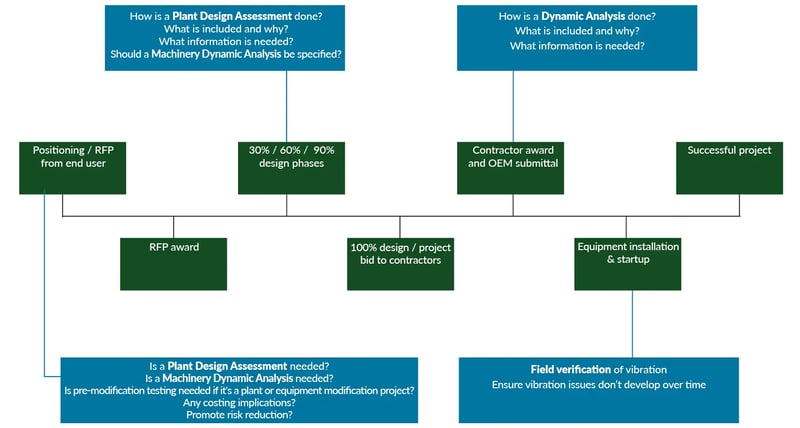
Figure 1. Answers the question “At what point in a project timeline should vibration expertise be used to help reduce risk for a successful new or modified plant design?”
Very often, upon start up, new or modified pump stations suffer from reliability issues. Excessive vibration leads to premature seal and bearing failure, piping fatigue, or catastrophic failures that lead to plant inoperability. Correcting a vibration problem when trying to commission a new or modified pump station greatly increases project costs and can create costly schedule delays.As highlighted in Figure 1 (lower left), the time to consider a vibration risk reduction effort is when Engineering firms or Contractors are preparing their response to a Request for Proposal (RFP). The following summarizes typical risk reduction tasks for the independent vibration consulting firm:
- Plant design assessment during the plant 30%-90% design phase. This effort may include pre-modification testing in the case of a plant or machinery modification;
- Pre-installation rotating machinery dynamics analysis shortly after the pumps are purchased; and
- Post-installation vibration verification testing before the plant is turned over to the plant owner.
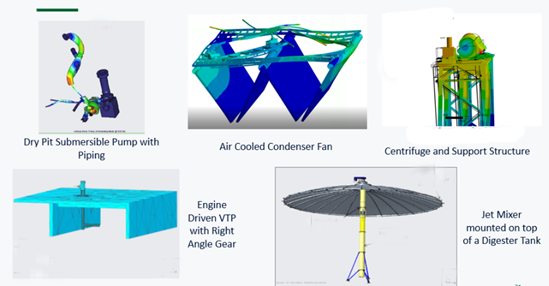 Figure 2. Examples of machinery systems including pumps that can benefit from vibration risk reduction.
Figure 2. Examples of machinery systems including pumps that can benefit from vibration risk reduction.
Step 1 is evaluating if a more specialized vibration risk reduction effort is required (lower left box in Figure 1). At the Step 1 RFP stage, the bidding Engineering firm and/or contractor need to base their proposed risk reduction plans on their experience and knowledge about the plant owner’s aversion to vibration problems. In many cases, a plant owner has been through the cost and schedule impacts of a significant vibration issue and will appreciate or require a proposal that includes a risk reduction plan. In other cases, the plant ownership group is still waiting to encounter such a problem and may not appreciate the need for risk reduction. Other factors to consider include:
- Equipment mounted on elevated structures/upper floors of a building,
- Long runs of vertical/horizontal pipe or column
- Tall mounting piers for rotating machinery (for example centrifuges on pedestals)
- Larger machinery or new machinery or machinery layout designs
- Initial plant design must consider future flow requirements or have stage installations
It should also be determined during Step 1 if the specifications should require a machinery dynamicsanalysis (Step 3) and post-installation field testing (Step 4) to reduce the risk of vibration issues during plant/equipment startup. ANSI/HI 9.6.8 provides a quantitative methodology that considers both risk and uncertainty to determine if and what level of analysis is needed for the pump system dynamics analysis (upper right box in Figure 1). It also provides guidance for specification writers with sample specifications.
The Step 2 (Plant Design Assessment) is initiated with the vibration specialist company providing equipment system dynamics expertise based on experience by consulting with the Engineering firm (upper left box in Figure 1). Finite Element Analysis (FEA) can be utilized using notional rotating equipment system designs during the 30% to 90% design phases. Figure 3 is an example FEA analysis results for a plant design at the 60% design phase.
A key outcome of Step 2 is verification that the station foundation/piping is properly designed from a machinery dynamics standpoint. If any issues arise, such as a structural natural frequency in the system, the foundation/piping can be redesigned to avoid this issue prior to concrete ever being poured.
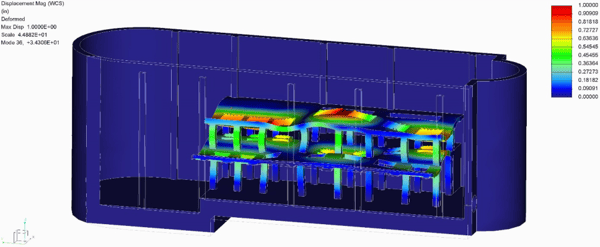 Figure 3. Example of a rotating machinery/floor/columns structural natural frequency mode shapes at the 60% plant design phase. Potential structural and acoustic resonance (high vibration) issues are sorted out well before the plant design is completed. Read our case study, "Reduce Vibration and Acoustic Risk At 60% Plant Design With Evaluation (CWP)".
Figure 3. Example of a rotating machinery/floor/columns structural natural frequency mode shapes at the 60% plant design phase. Potential structural and acoustic resonance (high vibration) issues are sorted out well before the plant design is completed. Read our case study, "Reduce Vibration and Acoustic Risk At 60% Plant Design With Evaluation (CWP)".
Step 3 (Machinery System Dynamics Analysis) should run with the “final” equipment, structure, and piping designs. This is the final check before manufacturing of the equipment to ensure that there are no lateral or torsional natural frequencies (internal to the equipment being purchased) or structural natural frequencies (a system issue with the equipment, foundation, piping system) before manufacturing.
In all cases, the assessment and test methods used to analyze, characterize, and finalize the structural dynamics of a rotating equipment system need to be considered beyond just the rotating machinery (Figures 4 and 5). The machinery system includes the support structure and floor, portions of the building, nearby piping including acoustics, and operational effects such as water level and multi-machine operation. By not including all of the relevant system information, poor assumptions of the structural dynamics will be made. In one case study, MSI identified a 32% difference in structural natural frequency based on poor assumptions. Typical safety margins for these analyses are only half or less of a 32% error. Read our case study, "Assess Foundation Effects on Existing Solids Handling Pumps".
Furthermore, there are industry standards, guidelines, and criteria to help specification writers reduce the risk of encountering such damage-causing vibration issues. Industry standards and guidelines include those from the International Organization for Standardization (ISO) 10816, ANSI/Hydraulic Institute, and the American Petroleum Institute (API) especially
More specifics about the test methods introduced in Figure 1 are discussed in Part 2 of this case history.
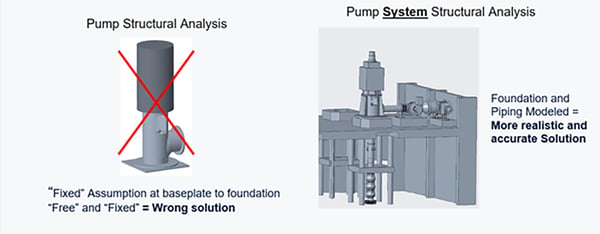 Figure 4. The machinery system including foundation, portion of the building, and nearby piping need to be taken into account for a real world and more accurate solution.
Figure 4. The machinery system including foundation, portion of the building, and nearby piping need to be taken into account for a real world and more accurate solution.
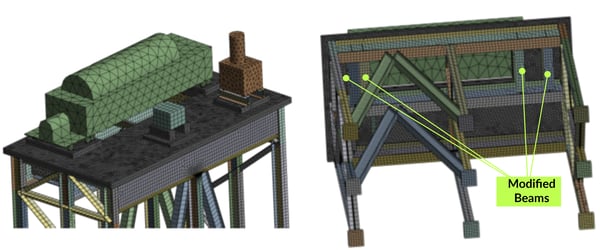
Figure 5. The project goal was to add a new centrifuge to an existing building. MSI recommended specific changes to the support structure based on the specified independent pre-modification testing and structural analysis. A resonance issue would have been missed if the pre-modification work had not been performed or if the analyst used the typical assumption for foundations stiffness rather than modeling the support structure.
REAL-WORLD EXAMPLES AND CASE STUDIES
MSI In Action
Case Study
Improving Cost of Ownership with Vibration Risk Reduction: 1/2
Focusing on vibration and dynamics issues during the plant design phase of a project pays off with smoother commissioning and lower cost of ownership over the plant’s life.
Case Study
Simulating the Performance of a Spinal Implant
A manufacturer of an innovative spinal implant approached MSI for help in assessing the implant’s structural integrity.
Case Study
Dynamic Analysis of a Street Sweeper for the Manufacturer
Troubleshoot and identify potential opportunities for early bearing failure, MSI performed experimental modal analysis (EMA) and operational deflection shape (ODS) tests on a prototype unit for the manufacturer.

